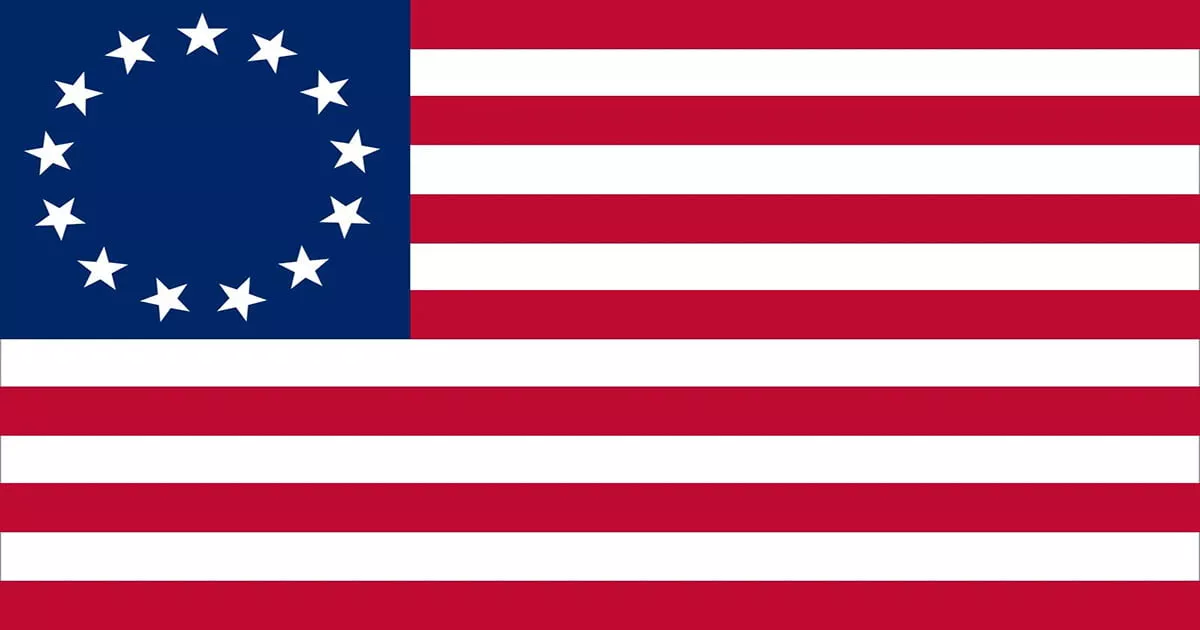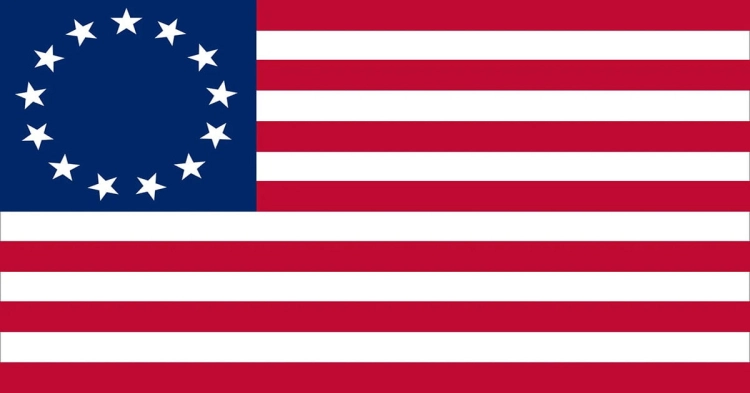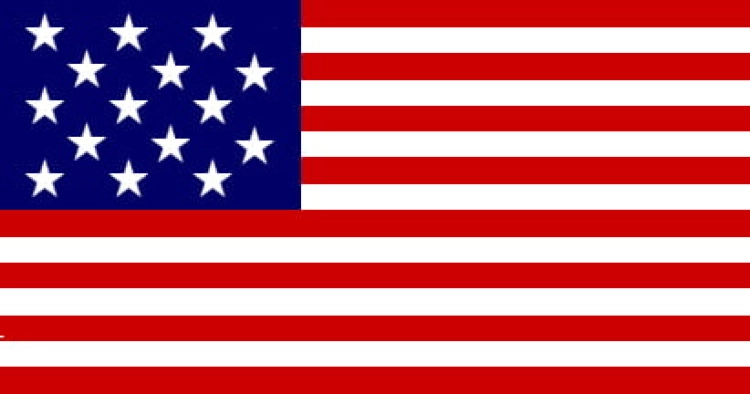
Betsy Ross
Betsy Ross received a large sum of money by the Pennsylvania State Navy Board to start making the new American Flags.
May 29, 1777

The stars and stripes have had many iterations since our country’s founding. Most of us have heard that Betsy Ross created the flag. But how did our flag come to represent our country? Let’s take a ride down America’s memory lane.
Early on in the mid-1700s, every colony had its own flag. They would fly these flags on their ships. England considered these vessels to be pirates. And would hang everyone on board if they were caught.
Betsy Ross was paid a large amount of money to begin producing the new national flags by the Pennsylvania State Navy Board. This would have been the 13 stripe and 13 stars in a circle variant of the flag. It’s easy to forget that flags were considered military tools at this time. They were not revered and flown so freely as they are today. On June 14th, 1777, the continental congress adopted an official national flag with 13 stripes and 13 stars in a circle, one for each colony.

In 1794, two more stars and stripes were added after Vermont and Kentucky joined the union.

This is the flag flying over Fort McHenry in Baltimore Harbor after the British bombardment in 1814. This is the flag that Francis Scott Key was looking at when he wrote the Star-Spangled Banner. Many preferred this new design, not wanting the isolate the new colonies; others thought adding more stripes to the flag with each new territory would look terrible.
In 1818, congress decided to return to the 13-stripe variant and only add new stars with each new state.
The Pledge of Allegiance has a bit of a weird history. In 1888, James Upham one of the owners of Youth’s Companion, a national magazine, started selling flags to schools. Socialist Francis Bellamy was hired a few years later. He was a member of the Society of Christian Socialists and creator of the original Pledge of Allegiance. A few years later, Upham had the idea to use Columbus Day to sell more flags by starting a flag ceremony that was accompanied by Bellamy’s Pledge of Allegiance.
I pledge allegiance to my flag and to the Republic for which it stands, one nation, indivisible, with liberty and justice for all.
Francis Bellamy
The original pledge was recited with a stiff raised hand salute, this practice was abandoned after WW2. “My flag” was replaced with “the flag of the United States of America” so new immigrant children wouldn’t be confused as to which flag they were pledging to. “Under God” was added in 1954 by Dwight D. Eisenhower at the urging of the Knights of Columbus.
Betsy Ross received a large sum of money by the Pennsylvania State Navy Board to start making the new American Flags.
May 29, 1777
The signing of the Declaration of Independence required a new National Flag. Congress adopted the 13 stripes and stars flag.
The 15 stars & stripes flag was adopted after Vermont and Kentucky entered the union.
Congress enacted the Flag Act which returned to 13 stripes and a new star would be added with each addition to the Union.
Socialists Francis Bellamy and James Upham convince congress to proclaim a flag ceremony be the center of Columbus Day celebrations in schools.
Congress authorizes June 14th to be Flag Day.
Our present-day flag became official when Hawaii became the 50th state in 1959.
The American flag symbolizes the country’s history, ideals, and values, such as freedom, democracy, and unity. For many Americans, displaying the flag is a way to show patriotism and love for their country.
The flag also serves as a reminder of the sacrifices made by past generations to protect those values and defend the country. Additionally, the flag is often associated with national holidays and events, creating emotional and cultural connections.
The United States is a melting pot of many cultures and backgrounds. These different cultures can and have caused tension among the citizens. The flag is something we can all unite under. It gives us common ground. So it may seem odd for an entire country to rally around a piece of cloth like America has, but honestly, we needed to.